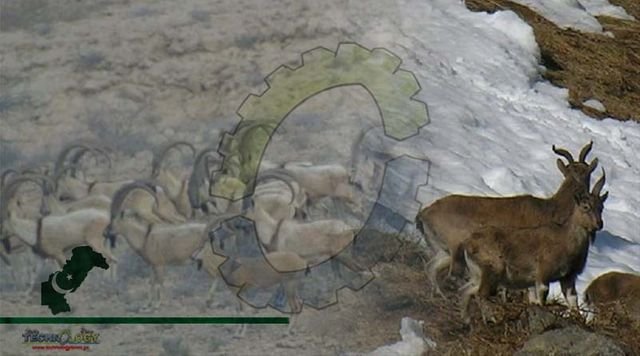Once an endangered species, the population of the Sindh ibex, or Turkman wild goat, in Pakistan has shown significant growth in the last decade due to a blanket ban on hunting and the protection provided by local communities.

The wild goat, which is endemic to southwest Pakistan, and also found in southeast Iran, is still viewed as vulnerable, although its number has shot up to 20,000 from less than 2,000 over the past four decades. Its habitats include the Kirthar mountain range, which falls in the southern Sindh and southwestern Balochistan provinces, and the adjoining Makran range.
A few kilometres before entrance to Sun, a small city in southern Sindh province, located some 156 kilometres (95 miles) from the provincial capital and the country’s largest city Karachi, a narrow metaled road leads to the Kirthar National Park, home to scores of rare species, and Sindh ibex’s largest habitat.
After a few kilometres, the road turns bumpy but remains drivable up to the historic Ranikot Fort, which is known as the Great Wall of Sindh due to its structural resemblance with China’s Great Wall.
As the fort’s stretched wall ends, the unpaved road converts into a rocky terrain, where only 4/4 wheelers could move. Unfazed by the risks of life-threatening accidents, locals also use motorbikes to travel on the terrain that overlooks hundreds of feet deep ravines.
A two-hour bone-shaking journey ends at a round valley stretching for miles and encircled by untamable mountains, home to majestic Sindh ibex. Dotted with mesquite, sidr, kikar (Acacia), and other wild trees, which are home to scores of rare birds, the barren valley, at the first sight, offers a rugged look.
However, sipping cold lassi (yoghurt drink) offered by the locals, and resting under the trees gives a totally different feeling. The otherwise warm wind turns cool here to dry up the rolling sweat, and the sound of chirping birds gives a healing touch. Established in 1974, and sprawling over 3,087 square kilometres (1,192 square miles), Kirthar National Park, the second largest national park after Karakoram National Park in the northern Gilgit-Baltistan region, stretches from Jamshoro district to Karachi.
According to wildlife authorities, the last 10 years were crucial in terms of the increase in the population of the wild goat, which is the national animal of Sindh, a 5,000 years old civilization. “Over 10,000 animals have been added to the population of Sindh ibex (at Kirthar National Park) during the past 10 years, which is a highly encouraging sign, considering the previous records,” Wali Mohammad Birahmani, a conservator of the Kirthar National Park, told Anadolu Agency.
The task to improve the wild goat population was assigned to the park authorities in 1978 when their number was nearly 2,000. In the initial years, Birahmani said the population growth was mediocre due to hunting and poaching and a lack of awareness among the local communities vis-a-vis the threat to this animal.
“However, by the passage of time, both the issues were resolved. Thanks to the local communities that made it possible, particularly in terms of implementation of the hunting ban,” Birahmani said, adding that the “untiring” efforts to protect the otherwise endangered animal yielded results during the past decade. Nonetheless, on the other side of the Kirthar mountains, in Balochistan, which makes up 42% of Pakistan, implementation of the hunting and poaching ban is a bit difficult due to the huge size of the province.
Although common people, by and large, are not involved in hunting the vulnerable species in the mineral-rich province, the formula does not apply to the chieftains, who often invite foreign guests, especially from wealthy Gulf states, for hunting.
This, wildlife officials said, forces a good number of Sindh ibex to flee toward Kirthar National Park for refuge. Sharif-ud-Din Baloch, the chief conservator of Balochistan Wildlife Department, admitted that “intermittent” incidents involving hunting and poaching of Sindh ibex are reported in Balochistan.
“There is a complete ban on hunting and poaching of Sindh ibex in Balochistan except for the trophy hunting. But it’s difficult to fully control this phenomenon due to the huge size and insufficient workforce,” he said.”We take strict action, including imprisonment and fines, in case of violations of the ban,” he told Anadolu Agency. The number of Sindh ibex in Balochistan is between 8,000 and 10,000, according to Baloch.
Balochistan’s Hingol National Park, which is home to over 3,500, serves as the second-largest habitat for the animal. In addition, Baloch said, game reserves and sanctuaries in Gwadar, Lasbella, Khuzdar and Makran districts also have a good population of Sindh ibex. The Sindh Wildlife Department has employed some 600 members of the local communities to help protect the rare species, mainly from illegal hunting.
Source: This news is originally published by tribune
